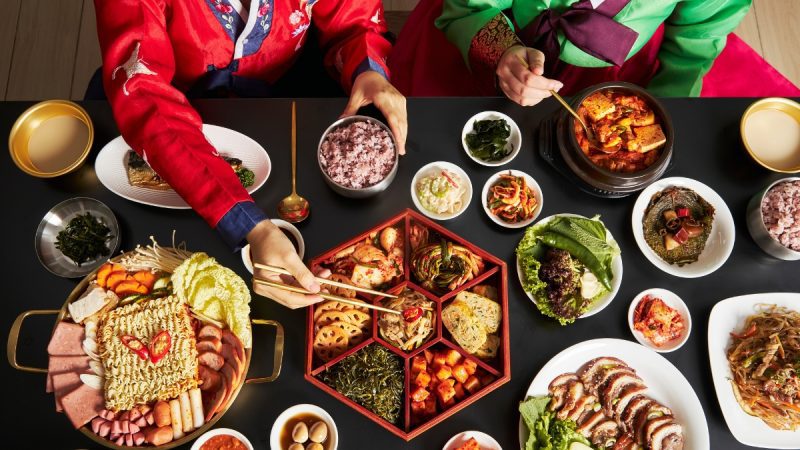If you’ve ever eaten at a Korean restaurant, you’ve undoubtedly noticed something unexpected: small plates of colourful side dishes appear on your table before your main course. There’s kimchi, pickled radish, stir-fried potatoes, bean sprouts, and sometimes even mini omelettes or spicy rice cakes. You didn’t order them, but they’re there, ready to be shared. And when you finish one? The server happily brings you more – no charge. This wonderful part of Korean dining is called banchan.
What Exactly Is Banchan?
“Banchan” simply means the side dishes that come with your main meal and rice. They are neither an appetiser nor a snack, but rather an essential part of the meal. A typical Korean meal consists of three to ten different banchan, depending on the restaurant or occasion. Some restaurants even go all out and serve a dozen or more!
There’s always kimchi on the table, but it’s never just one kind. You’ll often find variations made with cabbage, radish, or even cucumber. Then there might be marinated tofu, sesame leaves soaked in soy sauce, seasoned spinach, or stir-fried glass noodles. Every banchan is made to balance the meal; some spicy, some salty, some sweet, and some mild to calm your palate.
Also Read: Dev Deepawali 2025: 25 Lakh Diyas Lit Up Varanasi Ghats On A Full Moon Night
Why Are The Side Dishes Free And Unlimited?
This is the part that surprises most visitors. How can eateries afford to give away free food and even keep replenishing it? The answer is simple: tradition, not profit, is what matters most. The custom of serving banchan with free refills stems from Korea’s deeply embedded hospitality culture. In Korean homes, guests are fed enough to make them feel content and well-cared for, not just enough to eat. The same spirit permeates restaurants.
This practice has practical roots as well. During difficult times in Korea’s history, like the post-Korean War and economic hardships, vegetables were easier to grow and more affordable than rice. To make sure customers could eat enough and feel satisfied, restaurants would give free refills of banchan. That simple act of generosity became a cultural habit.
The idea of serving many small dishes actually goes back hundreds of years. During the early kingdoms of Korea, Buddhism influenced what people ate, and since eating meat was often discouraged, vegetable-based dishes became very common. Even when meat returned to Korean diets later, banchan remained an important part of the meal.
Today, whether you’re in Seoul or sitting at a Korean barbecue spot abroad, banchan still carries the same meaning. It’s what makes Korean dining feel so lively and welcoming.
Cover Image Courtesy: Canva/Thao Nhu

